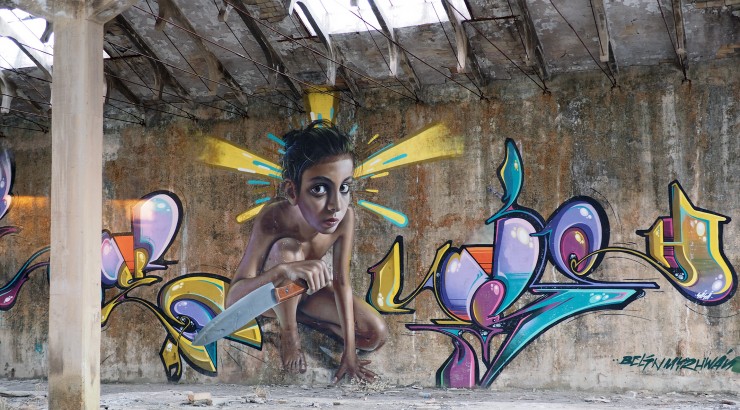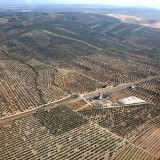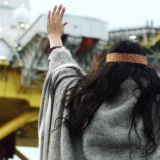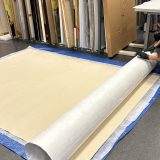My Work at Ancient Cástulo … Continued
August 27, 2014
In this post, I thought it would be nice to discuss some of the special experiences I’ve had since arriving in Spain. They mostly connect in clear ways to my archaeological research or teaching in the art department, but occasionally they just happened to be unusual or extraordinary…
Plane flight
Early in my time here, FORVM MMX site director Paco Arias mentioned the possibility of taking a flight over the site in a single-engine plane. A group of us drove on a Saturday morning to the Aeroclub Jaén, about 10 miles away, where amateur pilots keep their planes and can take off from a tiny strip in the middle of wheat fields and olive orchards. I took the first ride after Paco (who had done this before) and the pilot made me “take off” (I am sure that I was not actually in real control of the plane, but who knows?). He asked where I wanted to go, and we set off to the northeast towards Cástulo, following the route of the Guadalquivir and Guadalimar Rivers. This was a terrific way to learn the landscape better, with its rolling hills and olive groves (the province of Jaén produces more olive oil than anywhere else in the world). It was particularly useful to see from a different perspective how Cástulo’s plateau rises up over the river and plain below, and how this position allowed the city to control the surrounding region.
- Site and river
- Planes
- Roof
 Visits to sites around the country (Puente Tablas, Granada, Costa del Sol)
Visits to sites around the country (Puente Tablas, Granada, Costa del Sol)
One of the most remarkable things to happen to me during my trip has been the extraordinary hospitality shown by colleagues, not just at Cástulo, but elsewhere in Spain. I was invited by Manuel Molinos, professor at the University of Jaén and assistant director of the Center for the Study of Iberian Achaeology, for a personal tour of Puente Tablas, an Iberian site where the center has been excavating since the 1980’s. Puente Tablas was a much smaller site than Cástulo, but it offers tantalizing glimpses of the kinds of things we hope to find, including a major sanctuary, a housing quarter showing social stratification, and even what appears to be a kind of princely “palace.”

Later on, I was invited to visit Prof. Andrés Adroher’s workspace in the Granada Archaeological Museum, to see the Athenian pottery he’s been working on for the last decade from a deposit found during building construction along the Río Darro in the middle of the city. The next weekend he invited me to stay with him for the weekend and gave me a tour of Granada’s medieval neighborhood, El Albayzín, with its narrow streets and views of the Islamic palace known as the Alhambra.

And finally, a recent PhD from the University of Granada, Elena Sánchez invited me for a weekend to visit Phoenician sites near her home on the Costa del Sol, between Almuñecar and Málaga. This area was where Phoenicians first founded colonies in Spain, some as early as 900 BCE. This visit made it possible for me to see firsthand how the colonists separated their settlements from the cemeteries, usually placing tombs on the slopes of hills separated from towns by a river valley. I am extraordinarily grateful to all of these people for taking the time to help me learn the landscape of southern Spain and its relationship to the ancient world.
#IceBucketChallenge
Midway through my time in Spain, my brother nominated me for the ALS Ice Bucket Challenge. The phenomenon had started after I left the US, and although I had seen fleeting references to it on social media and in the news, I still wasn’t clear on the concept until I saw my brother’s video.
I made my own video on-site at Cástulo
and used the opportunity to nominate one of my co-workers here, Diego López Martínez.
Just that morning, Diego told me that his uncle had suffered from ALS and died last year as a result of it. Being able to pass the chain of viral donations towards a good cause on to friends and colleagues in another country was a great pleasure; Diego nominated another FORVM MMX’er, Paco Arias, who in turn nominated local celebrity and street artist Belin (mentioned in my previous post); Belin nominated the mayor of Linares and his friend, the Spanish rapper El Chojin (who has a nationally televised program)…
check it out!
Linares mines
Linares, like Cástulo itself, has a long history as a mining town, although most of the mines closed in the early 1980’s when Spain joined the European Union. The sites of the mines and foundries that surround Linares are themselves becoming sites of industrial archaeology. Through friends in FORVM MMX, I was introduced at a flamenco concert to Antonio Torres Muñoz, an anthropologist and community activist who has worked to document, preserve, and present the mines to the public. He has engaged local disadvantaged youth to help repair and clean the buildings which survive, too. Antonio invited me to visit one of the mine sites in the evening after work. I didn’t realize that, in addition to the historic value of the mine, there was now also a thriving graffiti culture represented on its walls as well. Chief among the participants was Belin (who later told me his grandfather had worked at the mine).
Final blog post: The technology being used by FORVM MMX to understand ancient Cástulo.
Ancient Cástulo Part One
|
Ancient Cástulo Part Two
|
Ancient Cástulo Part Three
|
Ancient Cástulo Part Five










